Have you ever noticed how many technical terms there are in early education? Education, in general, has a lot of jargon and sometimes the definitions are anything but consistent. This article is all about print referencing which is an early literacy strategy that every preschool and kindergarten teacher should master and include in their classroom. However, before you can do that you need to know what the heck print referencing is. The best and most concise definition I have found for this early literacy strategy is ” (Print Referencing) refers to the use of verbal and nonverbal cues to encourage children’s attention to and interactions with print.” that is from a scholarly article about the strategy by Laura M. Justice and Hellen K Ezell, you can read it here.
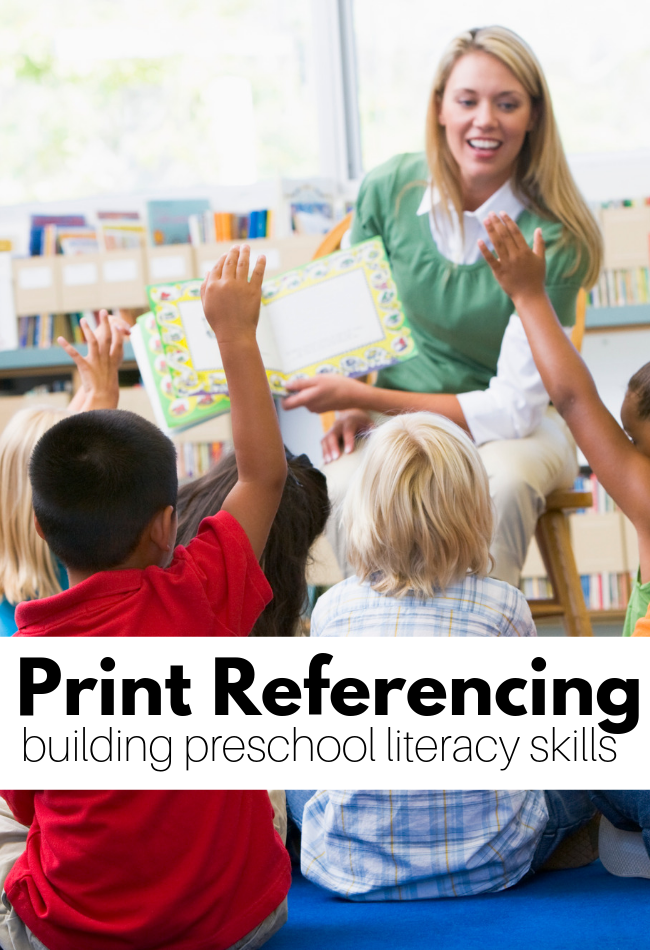
Print referencing is pretty simple really; it’s just teachers and parents pointing out and referring to elements of print. It’s easy to get print referencing confused with “Print concepts or concepts of print” which are two names used to describe how print works. Print referencing is the tool or actions we use to point out the concepts of print. Still with me? Even if you aren’t, know that you should be incorporating this strategy into your class. Print referencing is crucial because it helps your students notice and understand the functions of these elements.
Print Referencing in Preschool
Here are simple ways to use this early literacy strategy in your class:
- During read alouds point out the title as well as the author and illustrator’s names.
- Explicitly show children how to hold a book, if you hold it upside down you can’t read the words. The words need to be right-side up so you can read what they say.
- Track the text as you read with your finger or a pointer. If you slow down for dramatic effect slow your finger down too. Model the left-right-return sweep of the text. Tell your students that your finger is pointing to the words you are reading. We take for granted that children know that the words on the page are telling us what to say. Make sure you are making it clear that you are saying what is printed on the page.
- Discuss print in the illustrations. “Look, there is a word in this picture. What does it say? Yes! That street sign says, stop!”
- If your students are ready, ask them for their predictions about what a specific word might say. Books with short and repetitive text are great for this. “No, David!” by David Shannon, for example.
- Ask your students to look for letters/ sight words they recognize in the text. “Who can find the letter T on this page?” This strategy is excellent for small groups or when reading an alphabet book to a larger group.
Print Referencing Teaching Tips
The overall strategy is simple but very dependent on your student’s specific abilities. Pointing out the title, author and illustrator can and be done with every group, finding letters or sight words in the text is more sophisticated and if your group has varied abilities might be a better strategy for one on one or small group time. No matter what you can use, some of these simple strategies while reading with your students. When children better understand the elements of print, they can build stronger and more sophisticated literacy skills.
As the article linked above points out, and I have found in many years of using this strategy, a little goes a long way. If we spend all of storytime focused on print referencing storytime becomes a targetted lesson, and you might lose the magic of storytime. Books are meant to be read, not picked apart, so finding the right balance is key. The good thing is that preschoolers are great at letting us teachers know when interest is waning. So sprinkle a little print referencing into your day while you are reading to one or a while class but don’t let it wreck storytime. A little skill-building here and there daily will add up quickly for your students.
My Book
For more fun ways to create a strong literacy foundation for your preschool and kindergarten students grab my newest book;
Setting The Stage For Rock-Star Readers.
Get your copy of my new book here —> ORDER BOOK HERE
If you are interested in having me speak to your staff or community group about this book, literacy in ECE, or several other topics in early childhood education pop over to my speaker page to learn more.
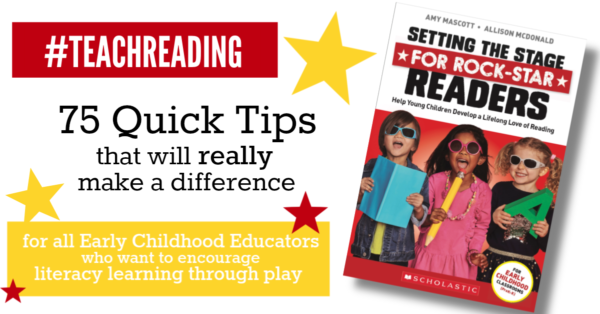
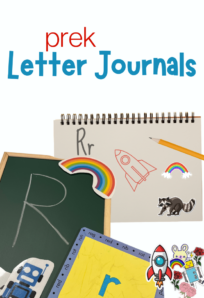
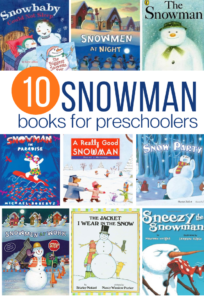
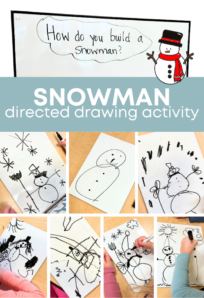
[…] and on your lap, draw his attention to print by dragging your finger along each word as you read. Research has demonstrated that children easily gain early reading skills with this simple act. Some of these times, draw his […]